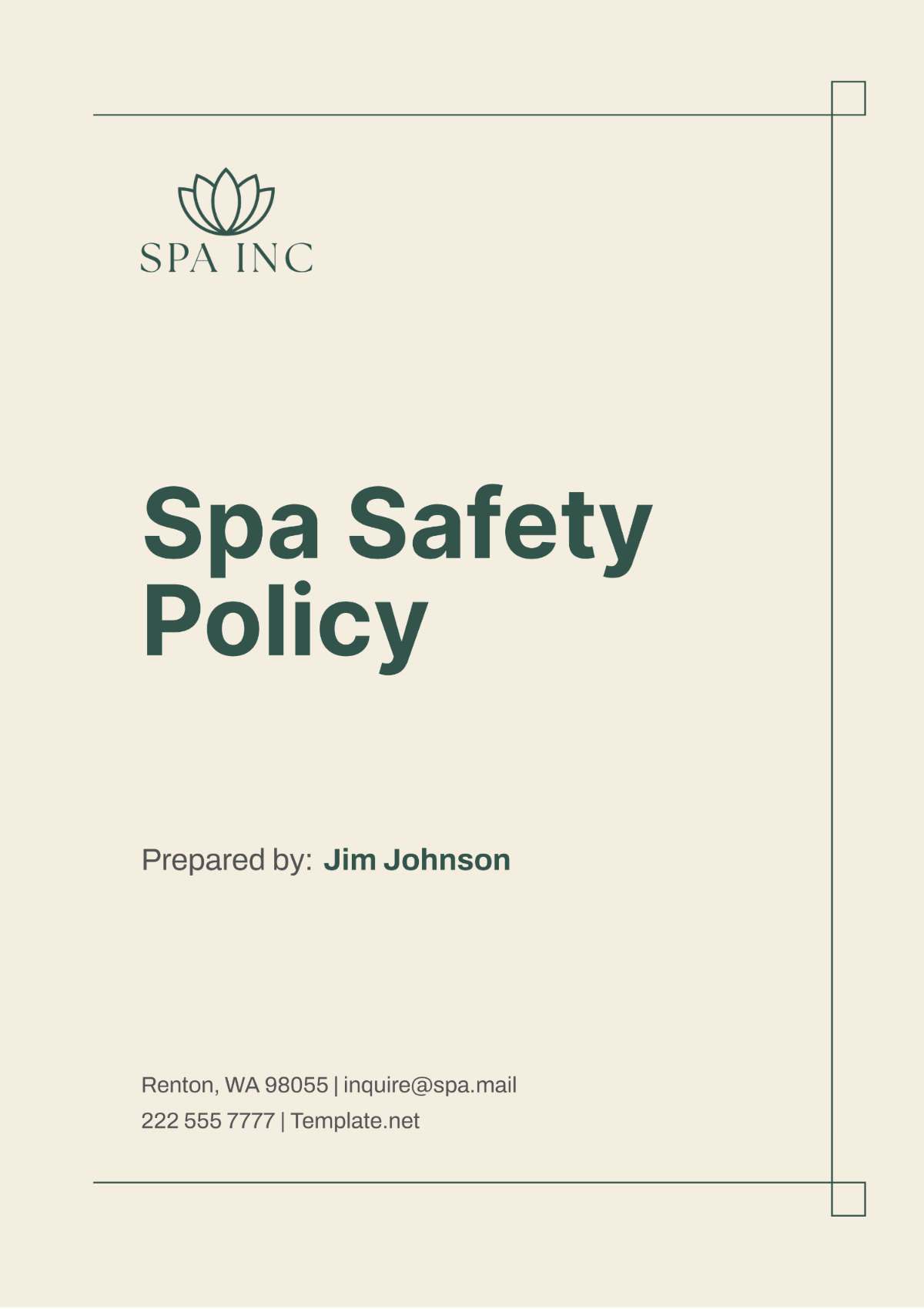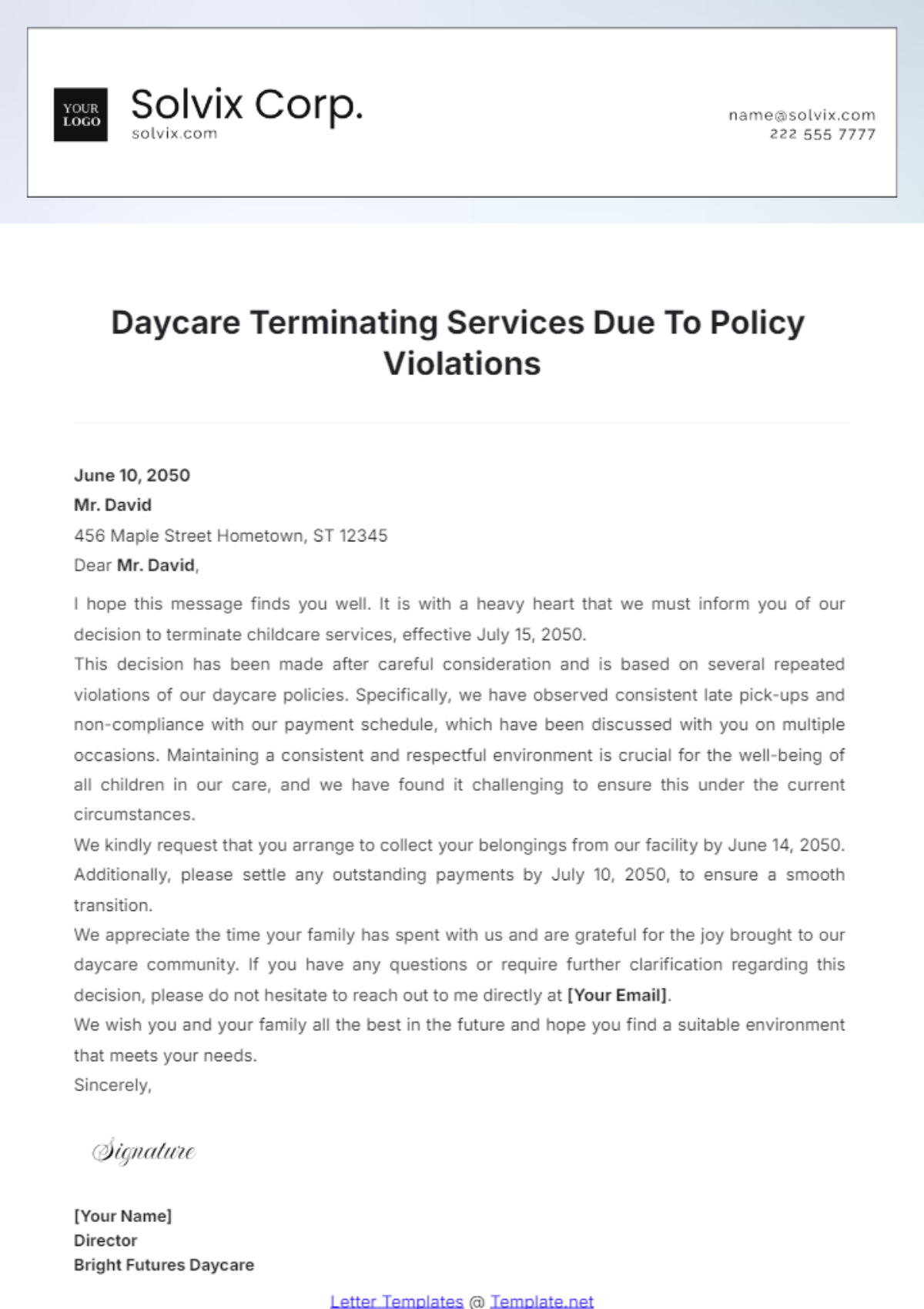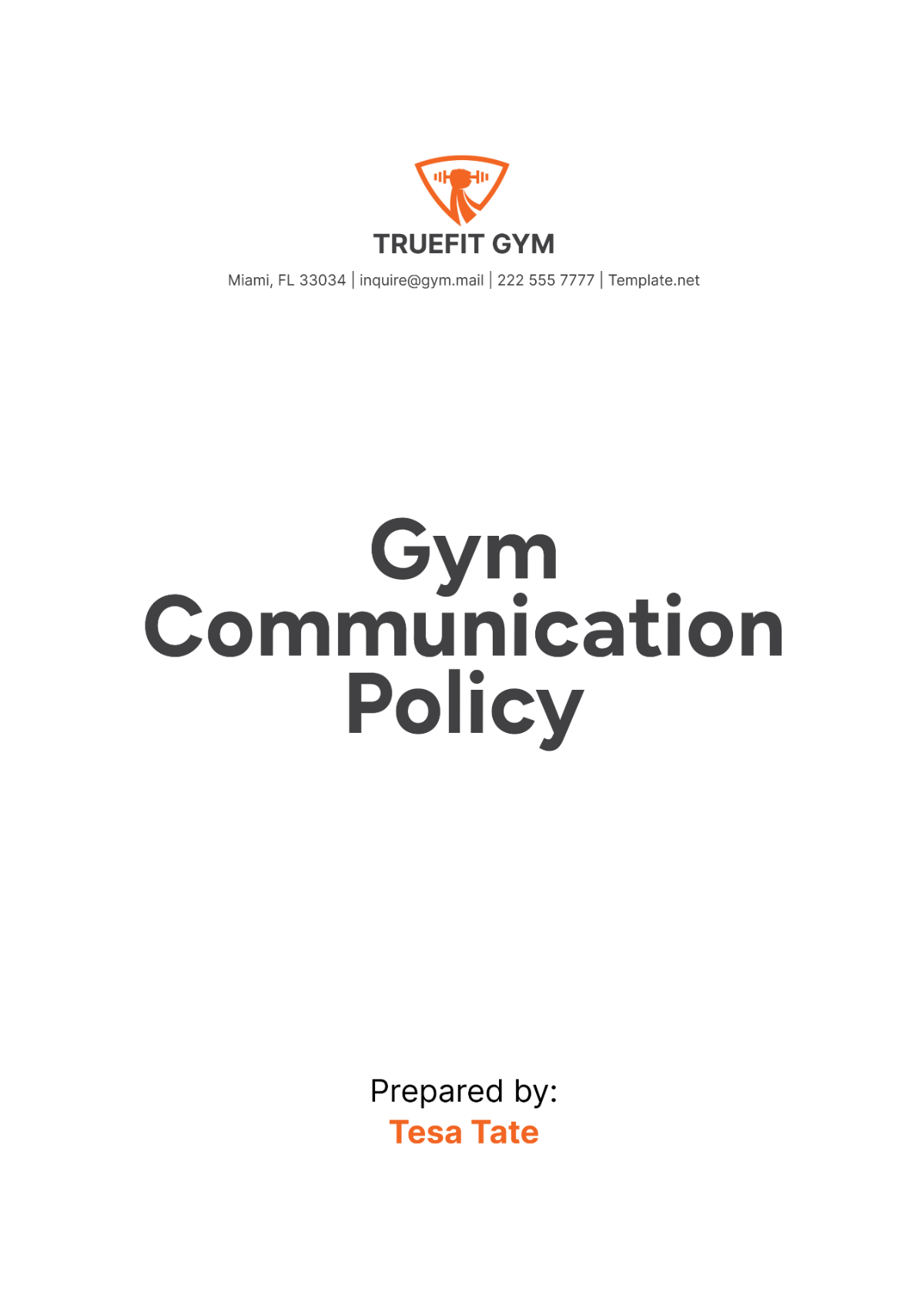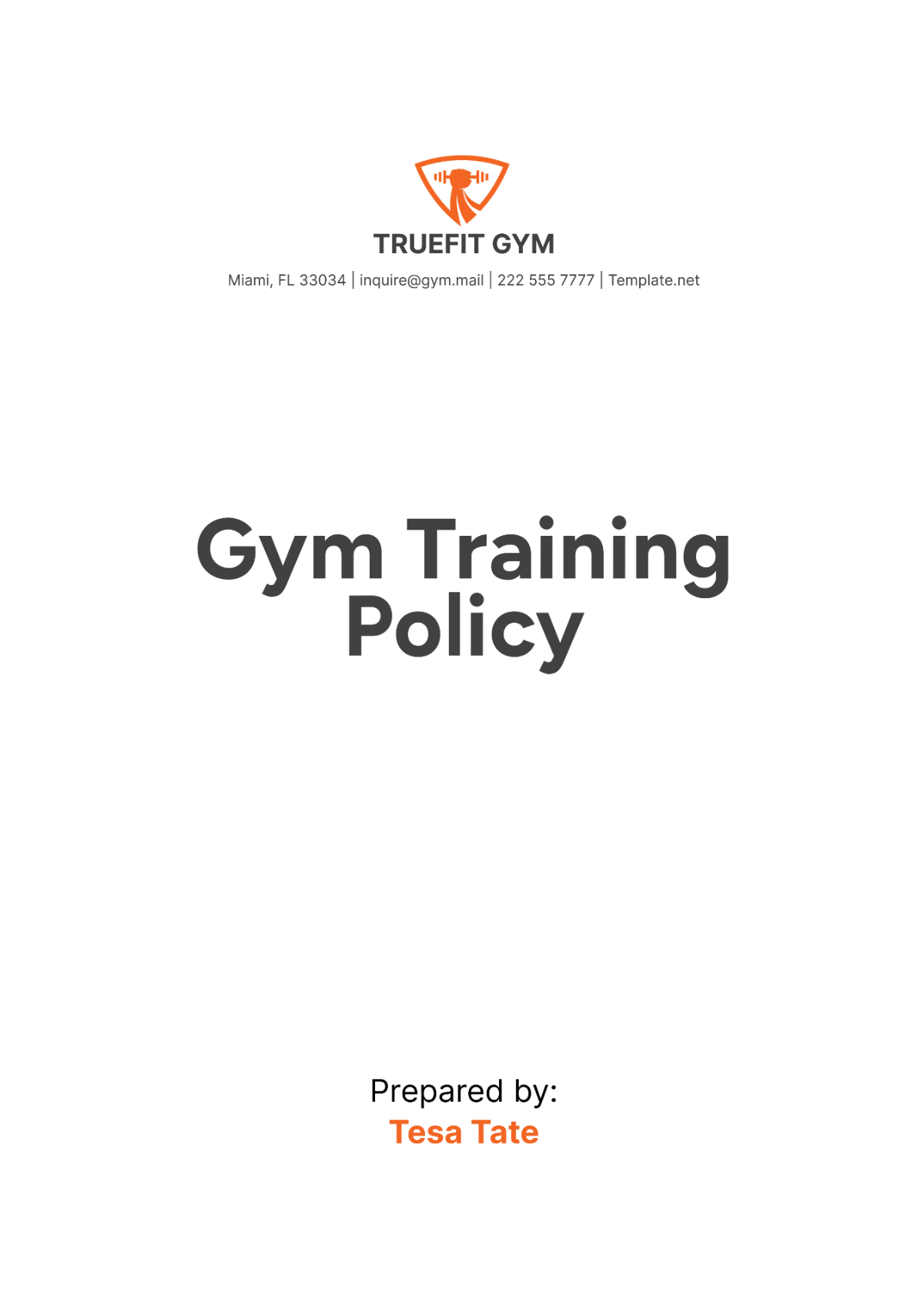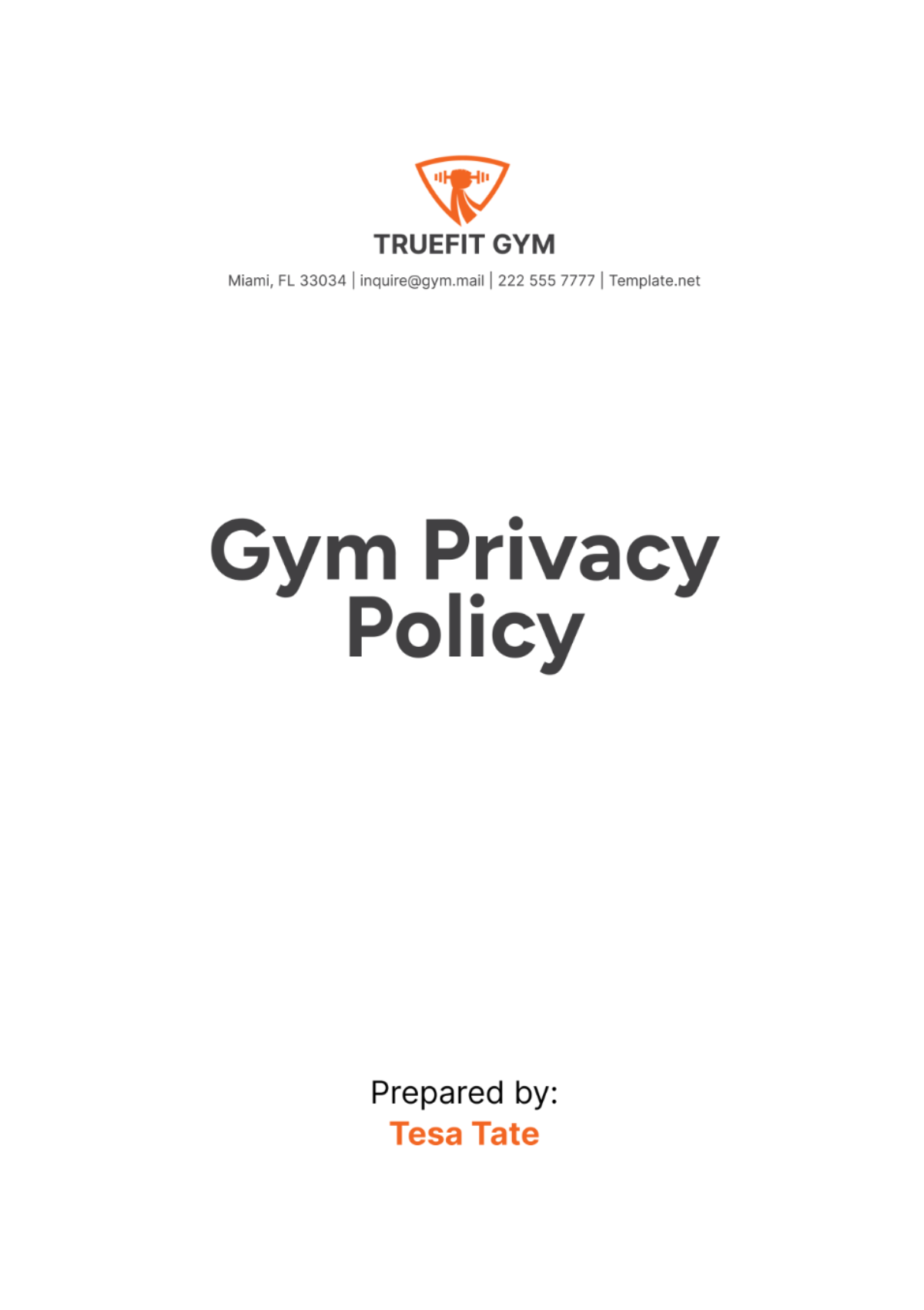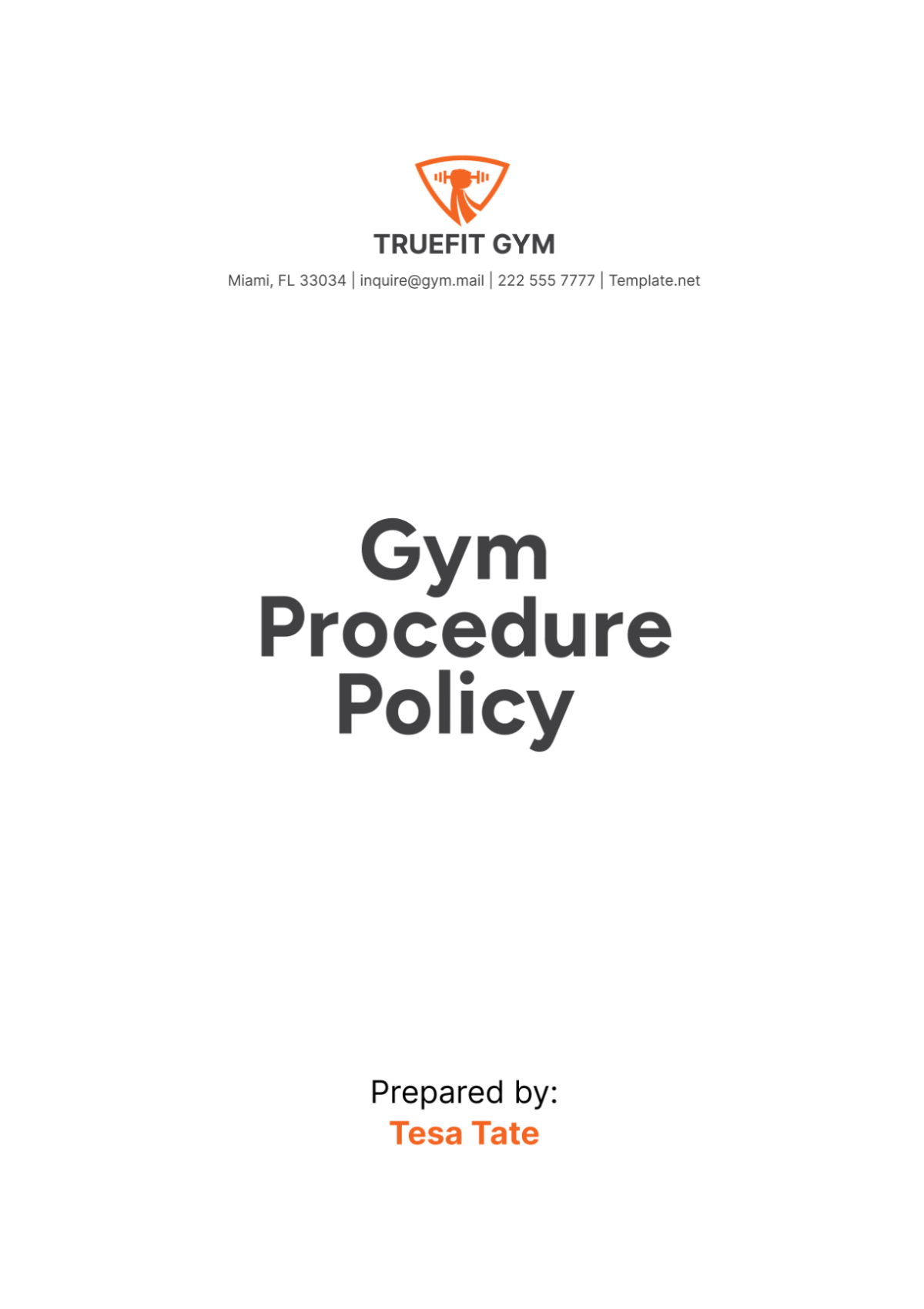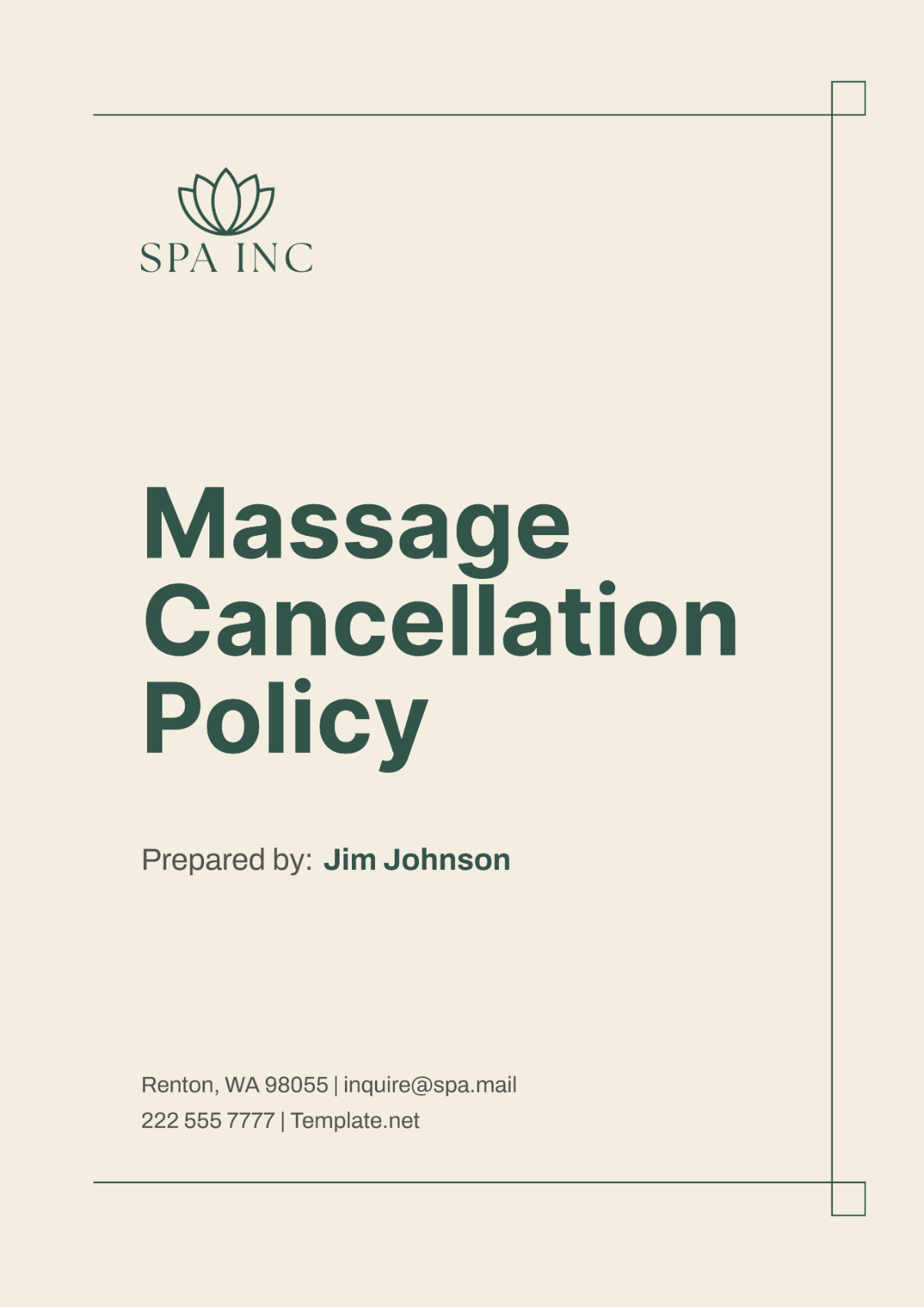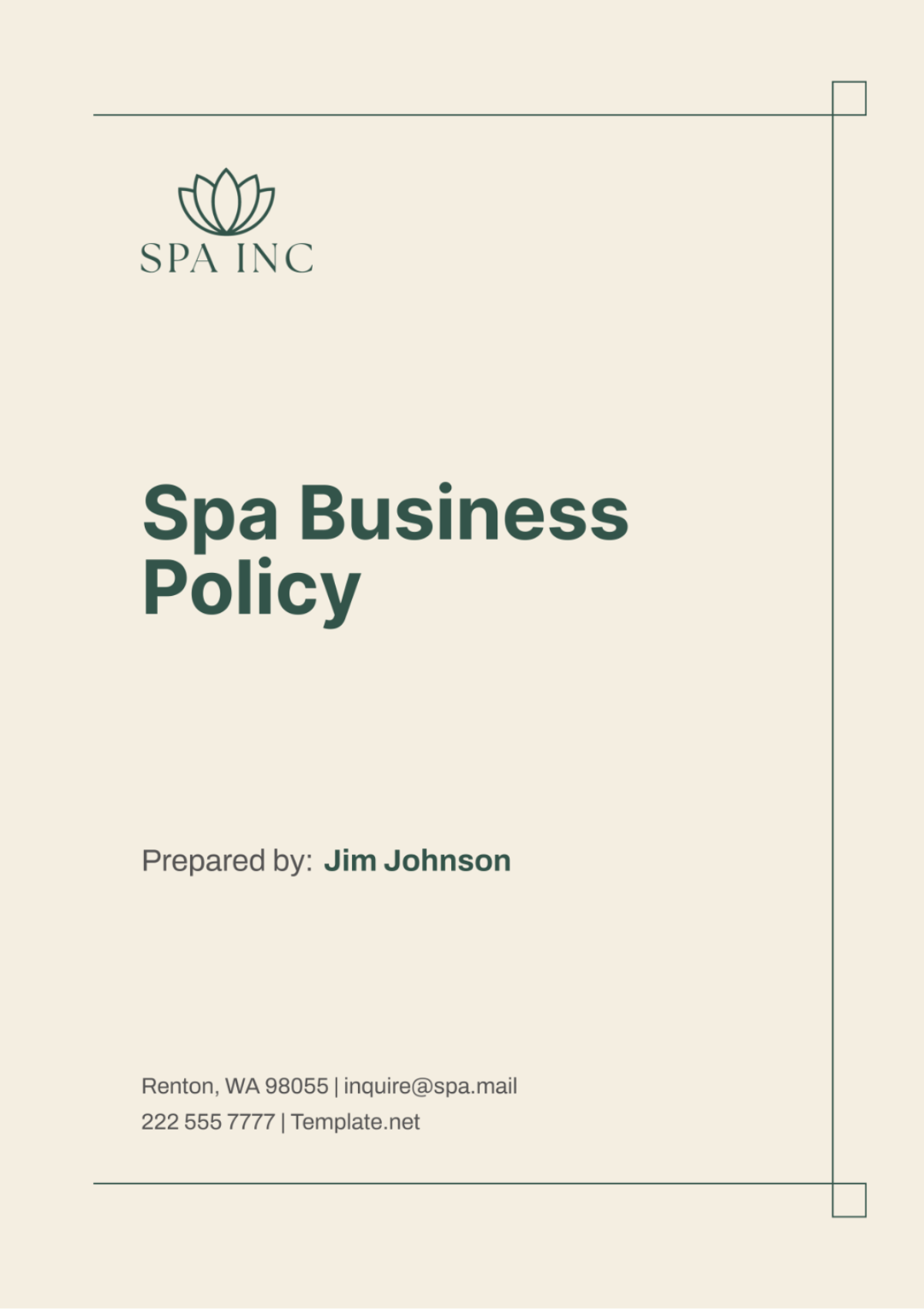Gym Training Policy
I. Introduction
The training policy of [Your Company Name] aims to establish guidelines and standards for delivering effective and safe fitness training programs to our members. This policy outlines the principles, procedures, and responsibilities involved in providing high-quality training services while ensuring member satisfaction and safety.
A. Purpose
Member Success: The primary purpose of this policy is to support the fitness goals and success of our members through structured and professional training programs.
Safety and Wellness: Ensure that all training activities are conducted in a safe and supportive environment that promotes physical and mental wellness.
Consistency and Quality: Maintain consistency and quality in training delivery across all trainers and sessions to uphold the reputation of [Your Company Name].
Continuous Improvement: Regularly review and update training practices to incorporate industry best practices and member feedback.
B. Scope
Training Programs: This policy applies to all types of training programs offered at [Your Company Name], including personal training, group classes, and specialized workshops.
Trainer Qualifications: Defines the qualifications and certifications required for trainers to conduct sessions effectively and safely.
Member Expectations: Outlines what members can expect from our training programs in terms of quality, safety, and results.
Feedback Mechanism: Establishes a feedback mechanism to continuously improve training services based on member input and satisfaction.
II. Trainer Qualifications and Responsibilities
Trainer qualifications and responsibilities are essential to ensuring the delivery of effective and safe training programs. The following table outlines the qualifications required for trainers at [Your Company Name].
No. | Qualification | Description |
|---|---|---|
1 | Certification | All trainers must hold a nationally recognized certification in personal training or group fitness. |
2 | Experience | Demonstrated experience in conducting fitness assessments and developing personalized training plans. |
3 | CPR/AED Certification | Trainers must maintain current CPR and AED certifications for emergency preparedness. |
4 | Continuing Education | Commitment to ongoing professional development and staying abreast of industry trends. |
A. Certification
Importance: Certification ensures that trainers have the necessary knowledge and skills to provide safe and effective fitness training.
Validation: It validates the trainer's competency in areas such as exercise physiology, anatomy, and program design.
B. Experience
Practical Application: Experienced trainers can effectively apply theoretical knowledge to design personalized programs that meet individual member needs.
Client Management: They are adept at managing client expectations and adapting training plans as members progress.
C. CPR/AED Certification
Emergency Preparedness: Trainers with CPR/AED certification can respond promptly and effectively in case of medical emergencies during training sessions.
Member Safety: It provides reassurance to members that their safety is a priority during training sessions.
D. Continuing Education
Professional Development: Ongoing education ensures that trainers stay updated on the latest fitness research, techniques, and industry standards.
Enhanced Skills: Continuous learning enhances the trainer’s ability to deliver innovative and effective training programs to members.
Trainers play a pivotal role in the success of our training programs by ensuring that sessions are not only effective but also safe and enjoyable for our members.
III. Training Program Offerings
[Your Company Name] offers a variety of training programs tailored to meet the diverse needs and preferences of our members. The following table provides an overview of the training programs available:
No. | Training Program | Description |
|---|---|---|
1 | Personal Training | One-on-one sessions with a certified trainer focusing on individual goals and personalized fitness plans. |
2 | Group Fitness Classes | Instructor-led classes targeting specific fitness goals, such as strength training, cardio, and flexibility. |
3 | Specialty Workshops | Workshops and seminars covering topics such as nutrition, stress management, and injury prevention. |
A. Personal Training
Customized Approach: Personal trainers work closely with members to develop tailored fitness plans based on individual goals, fitness levels, and any specific considerations.
Accountability: Regular progress tracking and adjustments ensure members stay motivated and achieve their desired results.
B. Group Fitness Classes
Variety: Classes cater to different fitness levels and preferences, providing members with opportunities to participate in a supportive group environment.
Motivation: Group settings promote camaraderie and motivation, enhancing the overall fitness experience for participants.
C. Specialty Workshops
Educational Focus: Workshops offer in-depth knowledge on specific health and wellness topics, empowering members to make informed lifestyle choices.
Skill Enhancement: Members can learn new skills and strategies to complement their fitness routines and improve overall well-being.
Our diverse range of training programs ensures that every member can find a fitness solution that fits their goals and lifestyle, fostering a community committed to health and wellness.
IV. Training Session Guidelines
Training session guidelines outline the standards and expectations for conducting sessions effectively and professionally. The following table summarizes the guidelines for trainers at [Your Company Name]:
No. | Guideline | Description |
|---|---|---|
1 | Punctuality | Trainers must arrive on time for sessions and adhere to scheduled appointment times. |
2 | Communication | Clear and effective communication with members regarding goals, progress, and instructions. |
3 | Safety Protocols | Adherence to safety protocols, including equipment usage and emergency procedures. |
4 | Feedback Collection | Regularly solicit feedback from members to assess satisfaction and make necessary adjustments. |
A. Punctuality
Professionalism: Punctuality demonstrates respect for members’ time and commitment to delivering a reliable service.
Session Efficiency: On-time starts maximize session time, allowing trainers to focus on achieving training objectives.
B. Communication
Clarity: Clear communication ensures that members understand instructions, goals, and the rationale behind training methods.
Motivation: Effective communication motivates members to stay committed to their fitness journey and achieve results.
C. Safety Protocols
Member Safety: Following safety protocols minimizes the risk of injury during training sessions, prioritizing member well-being.
Emergency Preparedness: Trainers are prepared to handle emergencies promptly and appropriately, ensuring member safety at all times.
D. Feedback Collection
Continuous Improvement: Regular feedback helps trainers assess member satisfaction and make necessary adjustments to training programs.
Member Engagement: Actively seeking feedback fosters a collaborative relationship between trainers and members, enhancing the training experience.
Adhering to these guidelines ensures that training sessions at [Your Company Name] are conducted professionally, safely, and effectively, promoting member satisfaction and results.
V. Assessment and Progress Tracking
Assessment and progress tracking are integral parts of our training programs to monitor member progress and adjust training plans accordingly. The following table outlines the assessment and progress tracking procedures:
No. | Procedure | Description |
|---|---|---|
1 | Initial Assessment | Conduct a comprehensive assessment to determine baseline fitness levels and goals. |
2 | Progress Evaluation | Regularly assess member progress through measurable indicators, such as strength gains or weight loss. |
3 | Goal Setting | Collaborate with members to set realistic and achievable short-term and long-term fitness goals. |
4 | Program Adjustment | Modify training programs based on assessment results and member feedback to optimize progress. |
A. Initial Assessment
Baseline Establishment: Assessments establish a starting point from which to develop personalized training plans tailored to individual needs.
Goal Alignment: Understanding member goals helps trainers design programs that are realistic and motivating, fostering commitment and engagement.
B. Progress Evaluation
Measurable Results: Regular evaluations track progress, providing tangible evidence of improvements and milestones achieved.
Performance Analysis: Trainers analyze assessment results to identify areas of strength and opportunities for further development.
C. Goal Setting
SMART Goals: Collaboratively set Specific, Measurable, Achievable, Relevant, and Time-bound (SMART) goals to guide members’ fitness journeys.
Member Empowerment: Involving members in goal setting enhances motivation and accountability, increasing the likelihood of goal attainment.
D. Program Adjustment
Responsive Approach: Adjust training programs based on assessment data and member feedback to optimize effectiveness and maintain motivation.
Continuous Support: Flexible program adjustments ensure that training remains challenging yet attainable, promoting sustained progress.
Regular assessment and progress tracking empower trainers and members alike to monitor progress, adjust strategies as needed, and celebrate achievements along the fitness journey.
VI. Member Engagement and Motivation Strategies
Member engagement and motivation are key factors in achieving long-term fitness success. The following table highlights strategies employed at [Your Company Name] to enhance member engagement and motivation:
No. | Strategy | Description |
|---|---|---|
1 | Goal Celebration | Celebrate member achievements and milestones to reinforce progress and commitment. |
2 | Challenges and Events | Organize fitness challenges and events to promote camaraderie and motivation among members. |
3 | Educational Workshops | Offer workshops on nutrition, fitness tips, and mental well-being to empower members. |
4 | Progress Tracking Tools | Provide members with tools and resources for tracking progress, such as fitness apps or journals. |
A. Goal Celebration
Recognition: Celebrating member achievements acknowledges their hard work and commitment, fostering a sense of accomplishment.
Motivation Boost: Positive reinforcement through goal celebration encourages members to continue pursuing their fitness goals with enthusiasm.
B. Challenges and Events
Community Building: Fitness challenges and events create a supportive community atmosphere, motivating members to stay active and engaged.
Competitive Spirit: Friendly competition in challenges inspires members to push their limits and achieve personal bests.
C. Educational Workshops
Knowledge Empowerment: Workshops provide members with valuable information and skills to make informed decisions about their health and fitness.
Lifestyle Integration: Practical tips and strategies from workshops help members adopt healthier habits beyond their training sessions.
D. Progress Tracking Tools
Accountability: Tracking tools enable members to monitor their progress independently, enhancing self-awareness and accountability.
Personalization: Personalized feedback from tracking tools allows members to adjust their approach and stay motivated on their fitness journey.
Effective member engagement and motivation strategies at [Your Company Name] ensure that members remain committed to their fitness goals and enjoy a fulfilling experience at our gym.
VII. Client Confidentiality and Ethics
Maintaining client confidentiality and upholding ethical standards are fundamental to the professionalism of [Your Company Name]. The following table outlines the principles and practices regarding client confidentiality and ethics:
No. | Principle | Description |
|---|---|---|
1 | Confidentiality Policy | Strict adherence to client confidentiality, ensuring that personal information is kept secure and private. |
2 | Professional Boundaries | Maintaining clear boundaries between trainer and client to uphold professionalism and mutual respect. |
3 | Ethical Conduct | Conducting training sessions with integrity, honesty, and respect for diversity and differences. |
4 | Conflict Resolution | Resolving conflicts or ethical dilemmas promptly and transparently, prioritizing client welfare. |
A. Confidentiality Policy
Trust Building: Upholding client confidentiality builds trust and establishes a secure environment for open communication and personal growth.
Legal Compliance: Compliance with legal and ethical standards ensures that client information is protected against unauthorized access or disclosure.
B. Professional Boundaries
Respectful Relationships: Maintaining clear boundaries fosters a professional and respectful trainer-client relationship based on trust and mutual understanding.
Role Clarity: Clearly defined boundaries help prevent misunderstandings and maintain focus on achieving fitness goals.
C. Ethical Conduct
Integrity: Conducting training sessions with honesty and integrity ensures that trainers act in the best interests of their clients.
Respect for Diversity: Embracing diversity and respecting individual differences promote inclusivity and equality in fitness training.
D. Conflict Resolution
Prompt Resolution: Addressing conflicts or ethical dilemmas promptly demonstrates commitment to client welfare and satisfaction.
Transparency: Transparent conflict resolution processes uphold trust and accountability, reinforcing the professionalism of [Your Company Name].
Adhering to client confidentiality and ethical standards reinforces the commitment of [Your Company Name] to providing a safe, respectful, and professional training environment for all members.
VIII. Training Program Evaluation and Feedback
Regular evaluation and feedback mechanisms are essential for assessing the effectiveness of training programs and improving service quality. The following table outlines the procedures for program evaluation and feedback collection at [Your Company Name]:
No. | Evaluation Method | Description |
|---|---|---|
1 | Member Surveys | Conduct surveys to gather feedback from members on their training experience and satisfaction. |
2 | Trainer Assessments | Evaluate trainer performance through member feedback and objective criteria. |
3 | Program Reviews | Regularly review training programs to assess alignment with member needs and fitness trends. |
4 | Continuous Improvement | Implement changes based on evaluation findings to enhance program effectiveness and member satisfaction. |
A. Member Surveys
Feedback Collection: Surveys provide valuable insights into member satisfaction, allowing [Your Company Name] to address concerns and improve service delivery.
Quality Improvement: Analysis of survey results guides improvements in training programs and overall member experience.
B. Trainer Assessments
Performance Evaluation: Assessing trainer performance helps identify strengths and areas for improvement, ensuring consistent service quality.
Professional Development: Constructive feedback supports trainers in enhancing their skills and effectiveness in delivering training programs.
C. Program Reviews
Alignment with Goals: Regular reviews ensure that training programs align with current fitness trends and meet evolving member needs.
Adaptability: Flexibility in program design allows [Your Company Name] to adapt quickly to changes in member preferences and industry standards.
D. Continuous Improvement
Iterative Process: Continuous improvement fosters innovation and ensures that training programs remain relevant and effective over time.
Member-Centric Approach: Feedback-driven improvements prioritize member satisfaction and contribute to long-term member retention.
By regularly evaluating training programs and collecting member feedback, [Your Company Name] can continuously enhance service quality, optimize member satisfaction, and maintain leadership in fitness training.
IX. Review and Update
A. Policy Review Cycle
Annual Review: An annual review process shall evaluate the effectiveness of our training policy in achieving objectives and meeting stakeholder needs. Feedback from staff and members will inform updates and enhancements.
Strategic Alignment: Aligning training policies with strategic goals and industry trends shall ensure relevance and responsiveness to evolving needs. This strategic alignment will support organizational growth and competitive advantage.
Continuous Improvement: Iterative improvements will refine training content, methodologies, and delivery mechanisms. Continuous feedback loops shall drive innovation and excellence in training practices, enhancing overall program impact.
B. Future Outlook
Industry Trends: Anticipating future trends in fitness and training shall inform proactive adjustments to our programs. This forward-looking approach will position us as industry leaders, prepared to meet emerging challenges and opportunities.
Technological Integration: Embracing technological advancements will enhance training accessibility, engagement, and effectiveness. Integrating innovative tools and platforms shall support personalized learning experiences and digital fluency.
Organizational Resilience: Training policies shall promote organizational resilience by equipping staff with adaptive skills and knowledge. This resilience will enable us to navigate change, seize opportunities, and sustain long-term success.
C. Commitment to Excellence
Quality Assurance: Our commitment to excellence shall encompass rigorous quality assurance measures across all training initiatives. This commitment shall ensure consistency, compliance, and superior service delivery.
Staff Development: Investing in staff development shall foster a culture of continuous learning and growth. By nurturing talent and empowering our team, we shall cultivate expertise and professionalism within our gym community.
Member Satisfaction: Ultimately, our training policies shall aim to enhance member satisfaction through exceptional service and personalized fitness experiences. By prioritizing member needs and expectations, we shall reinforce our reputation as a preferred fitness destination.
Regular review and update of the gym training policy demonstrate [Your Company Name]'s commitment to excellence, continuous improvement, and delivering exceptional training experiences for our members.























